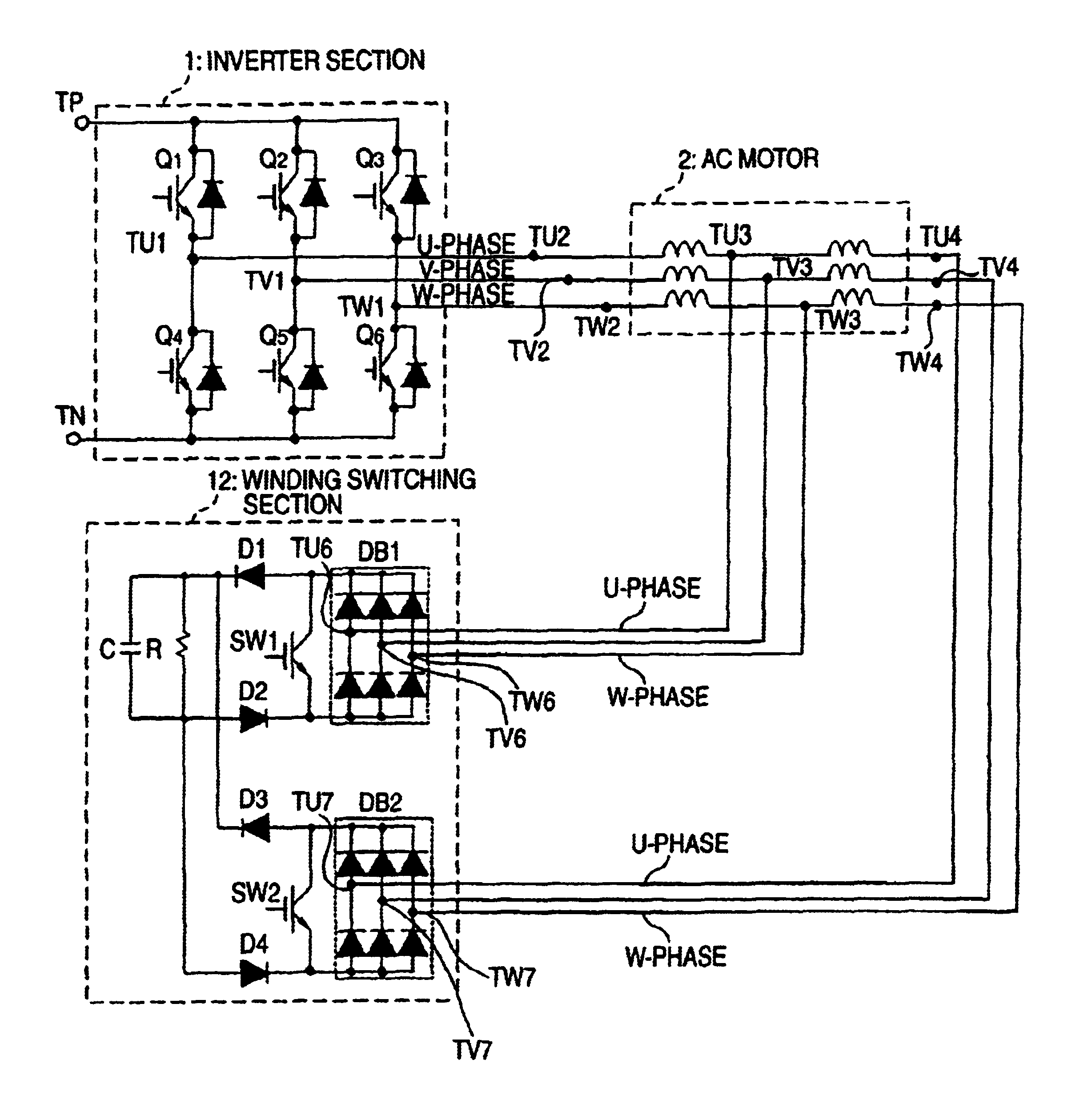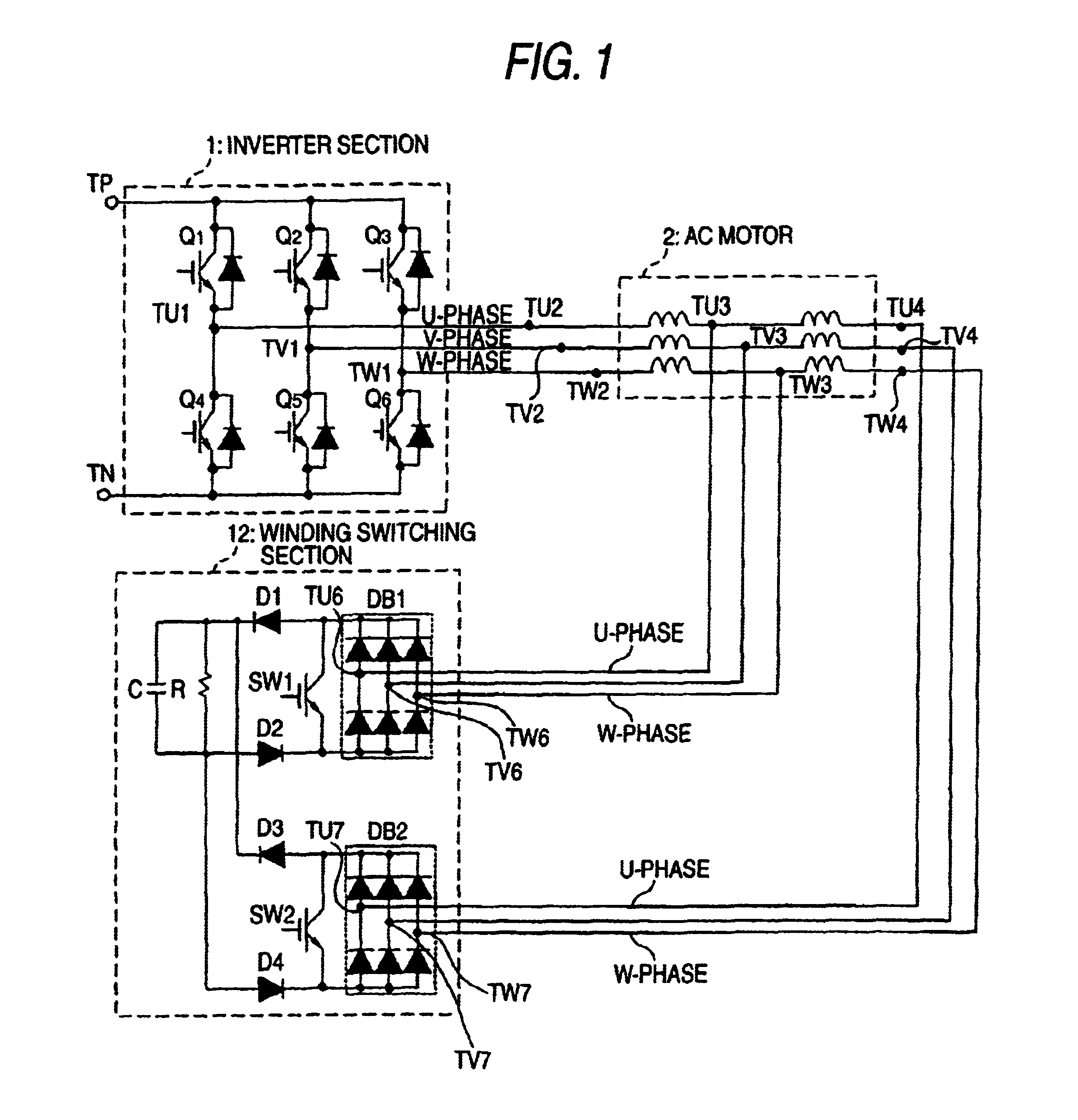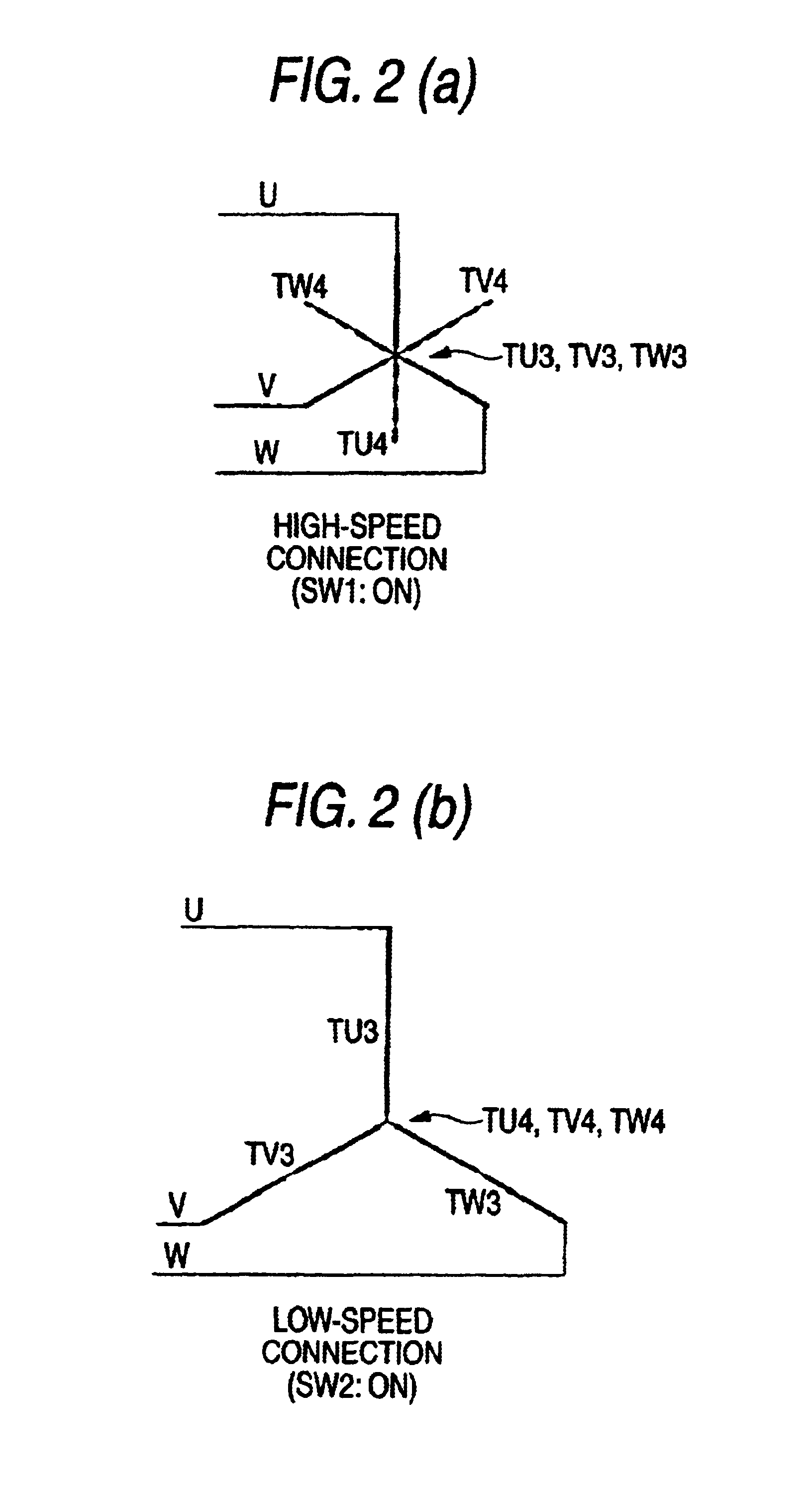Apparatus for switching windings of AC three-phase motor
a three-phase ac motor and winding technology, which is applied in the direction of motor/generator/converter stopper, electric generator control, dynamo-electric converter control, etc., can solve the problems of inability to permit the limitation of contact lifetime, the inability to switch in the high speed region, and the inability to reduce the effect of the winding, so as to minimize the influence of the switching on the machine and the device to be loaded, and the effect of winding
- Summary
- Abstract
- Description
- Claims
- Application Information
AI Technical Summary
Benefits of technology
Problems solved by technology
Method used
Image
Examples
Embodiment Construction
Embodiments of the invention will be described below with reference to the drawings. FIG. 1 is a diagram showing the structure of a basic circuit according to a first embodiment of the invention. In FIG. 1, 1 denotes an inverter section to be a variable frequency variable voltage source for a 3-phase motor control which is constituted by main circuit transistors Q1 to Q6. Terminals TP and TN are connected to the DC output terminal of a converter. 2 denotes an AC motor and 12 denotes a winding switching section. Each phase winding of the motor 2 is formed by two coils, and intermediate terminals TU3, TV3 and TW3 connected to the coils are taken as the external terminals of the motor. TU2, TV2 and TW2 to be the ends of winding terminals having each phase in the AC motor 2 are connected to output terminals TU1, TV1 and TW1 having each phase in the inverter section 1, respectively.
The other ends TU4, TV4 and TW4 of the winding terminals having each phase in the AC motor 2 are connected ...
PUM
 Login to View More
Login to View More Abstract
Description
Claims
Application Information
 Login to View More
Login to View More - R&D
- Intellectual Property
- Life Sciences
- Materials
- Tech Scout
- Unparalleled Data Quality
- Higher Quality Content
- 60% Fewer Hallucinations
Browse by: Latest US Patents, China's latest patents, Technical Efficacy Thesaurus, Application Domain, Technology Topic, Popular Technical Reports.
© 2025 PatSnap. All rights reserved.Legal|Privacy policy|Modern Slavery Act Transparency Statement|Sitemap|About US| Contact US: help@patsnap.com



